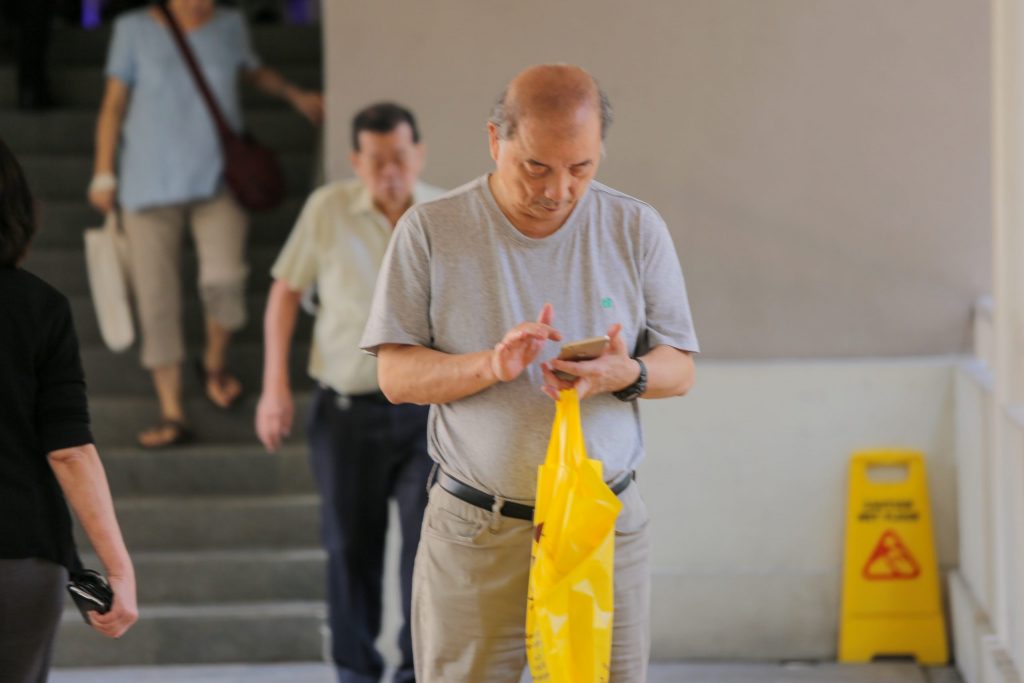From Digital Exclusion to Universal Digital Access in Singapore
November 24, 2021

Singapore’s Smart Nation Initiative was launched on 24th November 2014 by Prime Minister Lee Hsien Loong. The initiative sought to recognize efforts towards building Singapore into a smart nation; a nation that harnesses the power of technology to make daily living more convenient and to strengthen ties within our communities and societies. Since its inception, Singapore’s Smart Nation Initiatives have rolled out several programs that seamlessly incorporate technology into the lives of everyday Singaporeans. Technology is also seen as a catalyst for forging stronger bonds within the community. At the Smart Nation Initiative Launch, PM Lee cited the potential digital platforms offered, giving Singaporeans both young and old the opportunity to forge stronger connections with their friends and loved ones.
The introduction of these Smart Nation Initiatives could spell a change in the way we think about active ageing in Singapore. In order to embrace the inevitable disruptions that technology poses, ‘active ageing’ also means taking up and learning digital skills for seniors in Singapore. As Singapore progresses towards its vision of being a Smart Nation, these initiatives hope to strengthen digital literacy among Singaporeans of all ages and communities and contribute to a culture of digital inclusivity.
In the report ‘From Digital Exclusion to Universal Digital Access’ (2021), Associate Professor Irene Y.H. Ng (NUS Social Service Research Centre (SSR) and Dept of Social Work) and her co-authors argue that the COVID-19 pandemic has highlighted the ever-widening digital divide in Singapore. The authors, through the use of three case studies, present the problem of digital exclusion in the country, identifies vulnerable Singapore communities that are currently experiencing digital exclusion, and propose solutions to achieve equitable access to necessary digital resources.
The authors identify students from low-income households, low-income adults, the elderly, and migrant workers as communities that have been particularly affected by the problem of digital exclusion. This problem has only been made more apparent after the accelerated adoption of several digital technologies and platforms in response to the COVID-19 pandemic. The communities have been digitally excluded from three key areas: access to computing devices, the internet, and digital literacy skills.
Students from low-income households have imperfect information about the benefits associated with owning a laptop and taking up digital literacy skills. As a result, these students prefer their mobile devices and do not see a reason for owning a laptop. They use their mobile devices as their primary access portal to the internet. In addition, students from low-income households have inadequate support structures. They are unaware of the avenues they can turn to if they want to procure a laptop and lack the necessary skills needed to navigate the online environment they found themselves in.
Low-income adults, on the other hand, face strict qualifying criteria for social service programs. This prevents them from procuring a laptop of their own. Furthermore, the authors point out that there are a limited number of programs within the social service landscape that aim specifically to provide laptops to this demographic. In addition to the difficulties associated with purchasing a laptop for oneself, these individuals also struggle with digital literacy. Low-income adults struggled with online government applications and found it difficult to correspond with their children’s teachers and schools on digital platforms during the Circuit Breaker.
The language barrier posed by the use of digital platforms is one of the challenges facing senior citizens in Singapore. These individuals may not be comfortable with English. Coupled with minimal support from family and friends and the lack of confidence to explore and learn new digital literacies, these challenges have prevented senior citizens from using digital devices and exploring the digital environment in their own time. The lack of digital literacy skills renders senior citizens especially prone to cyberattacks and online threats lurking on digital platforms.
Migrant workers were also found to be vulnerable to digital exclusion in Singapore. These individuals lacked access to mobile devices. Some of these individuals struggled to purchase a phone for themselves in Singapore. Even if they had phones for themselves, some of these devices were found to be older and did not have the necessary software infrastructure to support their daily needs and functions. In addition, English is a language these individuals are not comfortable with. As a result, they found it especially difficult to navigate complex mobile applications such as digital banking platforms and healthcare applications.
The shared experience of digital exclusion among these vulnerable communities highlights the widening digital divide in Singapore. In response, the authors make a suite of recommendations aimed at achieving universal digital access in Singapore. These recommendations include tapping on existing infrastructures — Singapore’s current network of social service agencies and programs — and expertise and diverting a greater proportion of resources to bridge the divide.
Read the report here.
